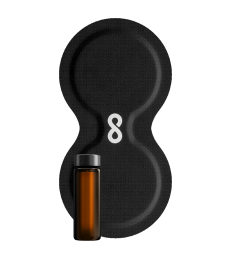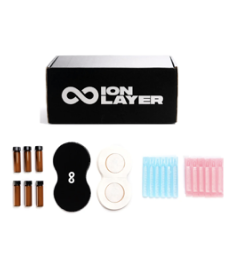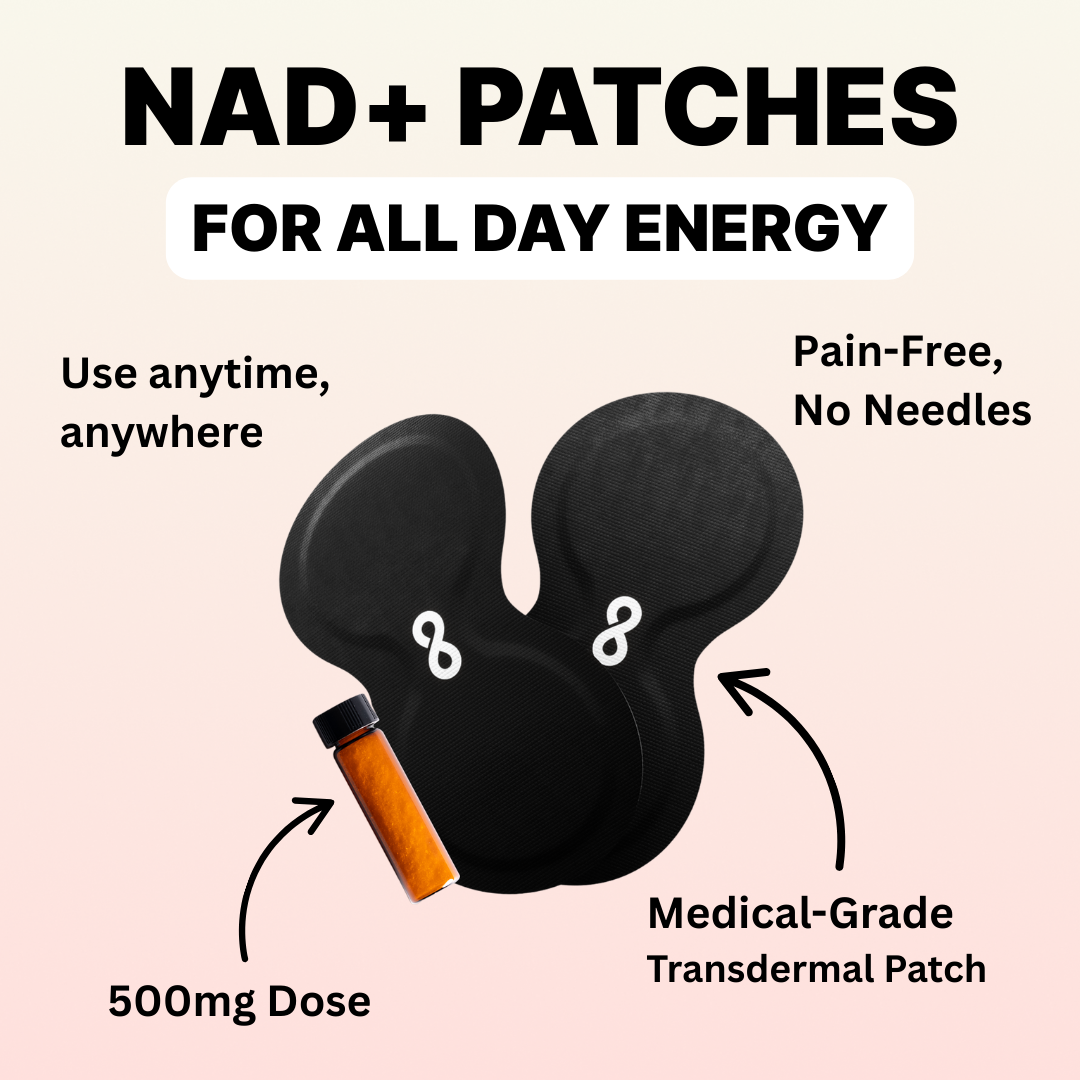
The topic of NAD (Nicotinamide Adenine Dinucleotide) decline with age is no stranger to the scientific discourse. It's a bit like hearing that exercise is good for you – a fact that's been discussed extensively. However, what might pique your interest is how stress, another well-known player in the game of life, can be a silent partner in depleting our NAD reserves. In an era where stress is a constant presence, often overshadowing our daily lives, understanding how to manage it effectively takes on a new level of importance.
So, let's not dwell too long on the familiar age-related decline of NAD and instead picture this: a world where the mastery of stress is not merely a luxury but a vital prescription for vibrant health, a world where NAD levels are sustained. To embark on this intriguing journey, here are 5 tips, and a bonus advice, on how mastering stress management may be the key to preserving the coveted currency of healthy NAD levels.
Why NAD+ is your cell's BFF
NAD+ is the link between how our cells burn energy and how they talk to each other. It's got a job roster that includes patching up damaged DNA, converting food into fuel, boosting our cell's defense systems, and even being the conductor of our internal body clocks or circadian rhythm. But here's the catch: as the calendar pages turn, our NAD+ levels take a nosedive, making it extra important to adopt some stress-busting moves that can help keep NAD+ in check and our energy levels up.
Low NAD levels may put us at a higher risk of heart problems, diabetes, and even neurodegenerative diseases. So, the game plan is to tackle stress with strategies that can naturally give NAD+ a boost and keep our cells happy.
5 stress-management tips for NAD+ resilience
Think of these stress-busting tips as your superhero squad that's here to save the day, ensuring your NAD+ levels stay healthy and your energy is off the charts.
1) Eat a balanced diet and do it mindfully
Your diet isn't just about satisfying cravings. It can either support you with energy or suck the energy right out of you. Load up on foods with tryptophan, niacin (think vitamin B3), and other NAD+ supporters. That means lean meats, fish, nuts, seeds, beans, and whole grains are your new best friends. And remember those colorful fruits and veggies—they bring in antioxidants that shield your cells from stress-related harm.
Instead of inhaling the food that’s on your plate, take a moment to savor each bite. Also, putting away your electronics and eating without the TV on will help you pay closer attention to hunger and fullness cues, and prevent you from overeating that may end up causing you more stress.
2) Cycle fasting and ketosis
When combined with a balanced diet, intermittent fasting and ketogenic approaches can complement stress management efforts. By optimizing nutrient intake during eating periods and leveraging the potential benefits of ketosis, you may enhance your resilience to stress and improve your overall well-being.
These benefits reach your brain too. It’s been observed that there’s a noteworthy decline ranging from 25% to 55% in the NAD+/NADH ratio, particularly among elderly individuals affecting the frontal and occipital lobes. This decline is not exclusive to aging but extends its reach into psychiatric conditions such as schizophrenia and bipolar disorder, primarily affecting the frontal lobes.
Additionally, these changes are coupled with a reduction in overall NAD levels. In alignment with these findings, one study found that the introduction of ketones led to an appreciable 18% increase in the brain's NAD+/NADH ratio in humans, albeit temporarily. This discovery underscores the potential of nutritional ketone interventions, transcending their role as an alternative brain energy source, to act as catalysts in elevating the NAD+/NADH redox state. Such interventions hold promise in providing the brain with added defenses against oxidative stress and inflammation.
3) Exercise regularly
Exercise isn't just about fitting into those jeans and dresses; it's an NAD+ booster and a love letter to your mitochondria (those energy factories in your cells). Aim for about 150 minutes of moderate-intensity cardio or 75 minutes of high-intensity training each week, along with a couple of days for building those muscles. The release of endorphins (feel-good hormones) with exercise ushers stress away as very few interventions do.
Additionally, Researchers have found that aerobic exercise training increased NAMPT levels in young men, and hence increased NAD+ in skeletal muscle via the NAD salvage pathway. Exercise isn't just about NAD+; it's also your ticket to feeling strong, happy, and healthy.
4) Prioritize sleep
With one in three adults not getting enough sleep, according to the Centers for Disease Control and Prevention, we can’t underscore enough that sleep should not be put on the back burner! It's prime time for your body to destress, recharge, and get rid of toxic metabolites from the brain. Since NAD+ plays a role in your circadian rhythm too, sound sleep isn’t only helping you build up your resilience to a new day to come, but also ensuring that your NAD levels are making a comeback.
Stick to a consistent sleep schedule, make your sleep zone a cozy retreat (think darkness, cool temperature, and silence), and put that phone away at least an hour before bedtime. Aim for 7 to 9 hours of quality sleep each night – it's like charging your cellular batteries for the day ahead.
5) Embrace the zen
Stress is like NAD+'s arch-nemesis, so it's time to call in the calm. Make meditation, deep breathing, muscle relaxation exercises, and yoga your stress-busting sidekicks. They activate your body’s chill-out mode (aka the parasympathetic nervous system), bringing relaxation and reducing stress. Less stress means more NAD+ in your corner.
Bonus: Grab an Ion Layer NAD+ patch
If you are seeking an extra boost in your NAD+ levels, high-dose NAD patches like the Ion Layer patches can be an innovative addition to this stress-management arsenal, offering even more potential benefits for enhanced cellular vitality, more energy, better sleep, and overall resilience.
NAD+ patches, such as the Ion Layer patches, offer a convenient and efficient method for increasing or restoring NAD+ levels in your body wherever you are and at any time. These patches harness advanced medical-grade transdermal technology to administer a precisely measured 500 mg of NAD+ directly through the skin. This approach ensures maximal absorption while bypassing the digestive system. Plus, it requires NO needles, discomfort, or sitting at a clinic for hours at a time.
Remember, stress management is about crafting a lifestyle that supports your cells, energy, and overall well-being. It's not a one-size-fits-all approach, so feel free to mix and match these tips to create your own stress-busting masterpiece. Just like a recipe, your unique blend will be your secret sauce to preserving NAD+ and fueling your resilience. And, of course, before you embark on any significant changes, especially if supplementation is involved, consult with a healthcare professional to ensure you're on the right path to a healthier, more energized you.
Disclaimer: This advice isn't a doctor's note; it's more like a friendly chat. Before you overhaul your diet, or workout routine, or try something new, get the green light from a healthcare professional. Our Ion Layer team will connect you with a healthcare professional when you join, so they can prescribe your NAD+ patches to you







